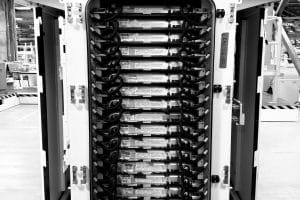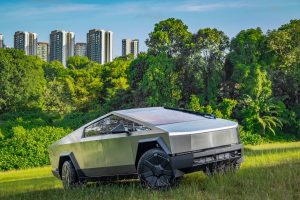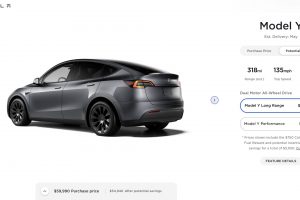- 🚗 Tesla released its Q2 2024 vehicle safety report.
- 📉 Tesla vehicles have one of the lowest probabilities of injury as tested by the U.S. New Car Assessment Program.
- 🦺 The company attributes safety to a combination of passive, active, and automated driver assistance features.
- 📊 One crash was recorded for every 6.88 million miles driven with Autopilot.
- 🚫 For non-Autopilot Tesla drivers, one crash occurred every 1.45 million miles.
- 🇺🇸 U.S. average shows one crash for every 670,000 miles based on NHTSA and FHWA data.
- 🔥 Vehicle fire incidents for Teslas are notably less frequent compared to the U.S. average.
Tesla has been at the forefront of automobile safety, leveraging cutting-edge technology to ensure the highest levels of protection for its users. Their Q2 2024 safety report provides compelling data that underscores the effectiveness of their safety measures. This blog post will analyze the key findings of this report and explore what makes Tesla vehicles some of the safest on the road.
Key Highlights from Tesla’s Q2 2024 Safety Report
Let’s review the major takeaways from Tesla’s Q2 2024 vehicle safety report:
- One Crash Every 6.88 Million Miles with Autopilot
- Tesla recorded one crash for every 6.88 million miles driven where Autopilot was in use.
- Safety Without Autopilot
- For Tesla drivers not using Autopilot, there was one crash for every 1.45 million miles driven.
- U.S. Averages for Comparison
- Low Probability of Injury
- Tesla vehicles, including the Model S, Model 3, Model X, and Model Y, all feature among the lowest probabilities of injury according to the United States New Car Assessment Program.
- Vehicle Fire Incidents
- Tesla reports one vehicle fire for every 130 million miles driven, significantly lower than the U.S. average of one vehicle fire per 18 million miles.
Why Tesla Stands Out
Tesla’s success in offering highly secure vehicles can be attributed to a blend of three core safety features:
Passive Safety
Passive safety features are designed to minimize injury during an accident. Tesla’s advanced crumple zones, robust architecture, and strategic use of high-strength materials help achieve this. Many Tesla models have aced safety tests conducted by third-party agencies, enabling them to claim some of the lowest injury probabilities in the industry.
Active Safety
Active safety involves technologies aimed at preventing accidents before they happen. Tesla equips its cars with various sensors, cameras, and radar technology to offer features like lane-keeping assist, emergency braking, and collision avoidance. These systems are continuously improved through over-the-air updates, ensuring that Tesla vehicles get safer over time.
Automated Driver Assistance
Tesla’s Autopilot and Full Self-Driving (FSD) systems are among the most advanced driver assistance technologies available. By analyzing real-time data from hundreds of thousands of miles, Tesla’s AI can make better driving decisions. The reported one crash per 6.88 million miles under Autopilot is a testament to its effectiveness.
Comparisons with Industry Averages
For even better perspective, let’s compare Tesla’s performance to national averages:
- Crash Rates:
- Tesla Autopilot: 1 crash per 6.88 million miles
- Non-Autopilot: 1 crash per 1.45 million miles
- U.S. Average: 1 crash per 670,000 miles
- Vehicle Fires:
- Tesla: 1 fire per 130 million miles
- U.S. Average: 1 fire per 18 million miles
Clearly, Tesla’s vigilant approach to vehicle safety far exceeds national standards.
Opinions and Expert Insights
Tesla’s proactive stance on safety is commendable. By integrating various safety layers—passive, active, and automated—Tesla ensures that drivers and passengers remain secure. The industry should take notes on how Tesla leverages continuous software updates to keep vehicles safe and current, reducing the necessity for recalls and ensuring real-time upgrades. Additionally, Tesla’s transparent disclosure of its safety data sets a new standard for accountability in the automotive sector.
Conclusion
Tesla’s Q2 2024 safety report delivers robust evidence that Tesla remains committed to vehicle safety. The company’s innovative technologies and rigorous safety standards make its vehicles some of the safest on the road today. As we move into an era where automated and electric vehicles become the norm, Tesla clearly stands out as a leader in creating safer roads for everyone.





